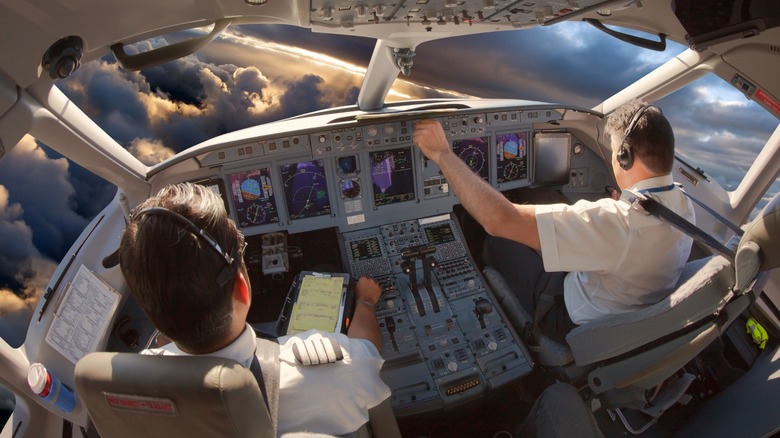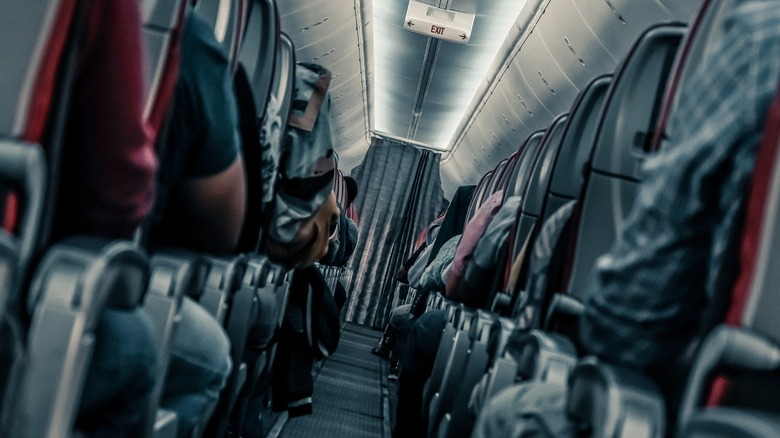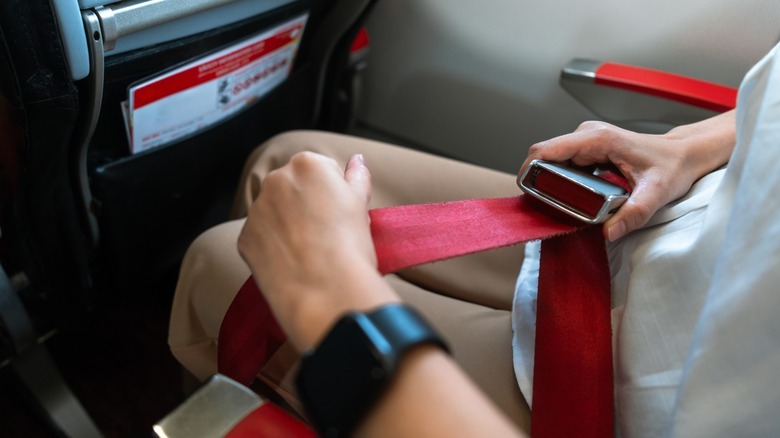A Veteran Commercial Pilot Shatters One Longstanding Myth Of Airplane Safety
Aviation is often regarded as the safest way to travel, with the International Air Transport Association (IATA) computing a rate of one accident per 1.26 million flights in 2023. This statistic equates to one fatal accident for that year, which resulted in 72 fatalities, compared to a total of 37.7 million flights in the same period.
Despite this excellent safety record, many still ask what the safest seat on a plane is. Many research projects have already attempted to answer this question, both by private bodies and government institutions. Because of this, we have the idea that one part of a plane or another is safer than the rest.
But is this true? We asked aviation expert and veteran pilot Captain Richard Levy the lowdown on which seat was the safest in a plane, and his answer surprised us. Capt. R. Levy is a retired pilot with over 30,000 hours of experience flying different airliners, including the Boeing 777, 767, 757, and the DC-10. He was also an FAA-approved check pilot and is currently a simulator instructor.
There is no guaranteed safe seat on an airplane
Popular Mechanics reported (via Statista) that 69% of the people in the rear part of the plane survived commercial jet crashes. Furthermore, Time discovered that the middle seats were typically the safest, with survival rates at 72%. And while these numbers are true, they're just that—statistics.
For example, most of the 184 survivors of the 1989 crash of United 232 in Sioux City were seated near the front middle of the plane. Furthermore, all three fatalities in the 2013 Asiana Airlines Flight 2014 crash in San Francisco were sitting at the back of the aircraft.
Unfortunately for the nervous flyers around us, Captain Levy says, "Seating position on a commercial aircraft does not guarantee safety in the event of an accident. There are so many different possibilities and causes of accidents that trying to predict the perfect seat that protects life in cases of aircraft emergencies is next to impossible."
How to stay safe in the event of a plane crash
As IATA data showed, you're unlikely to get into a plane crash. If we go by the number of safe flights over the past five years, you must fly daily for more than 2,471,000 years to be involved in one. Nevertheless, awareness is the key to survival if you face an in-flight emergency.
Professor Ed Galea of the University of Greenwich told ABC News, "You are responsible for your life. If you know what you're doing, you've got a better chance of surviving." Prof. Galea studied the seating plan of several aircraft accidents and discovered that passengers moved an average of five rows before exiting a plane.
Discovery TV even sponsored a few episodes on different shows that studied the effects of plane crashes on humans. In 2012, the network crashed a Boeing 727 in the Sonoran desert and found that bracing for impact will significantly enhance a passenger's chances of survival. Not coincidentally, this study confirmed that passengers seated within five rows of an emergency exit had the best chance of survival, backing up Galea's findings.
Furthermore, the Killer Brace Position episode on Mythbusters (Season 3, Episode 13), which aired in June 2005, tested the brace position with real people (the hosts). It showed that it effectively reduced the forces on their bodies that would've otherwise injured them during a crash.
Finally, no matter where you sit, you should always listen to the emergency briefing before every flight and read the emergency cards, no matter how many times you've heard and read them. "If you haven't thought about what you might do and prepared, the thing becomes overwhelming and you shut down," Galea said. "You can prepare yourself to react appropriately in emergency situations."


